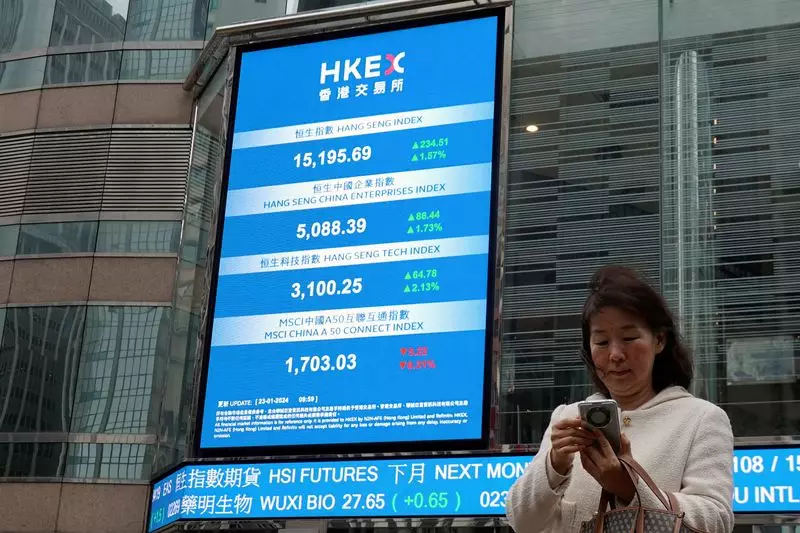As we enter the final trading week of November, the outlook for emerging markets (EM) appears increasingly dire. Investors, already facing a challenging climate, are grappling with the relentless ascent of the U.S. dollar, which has seen an unyielding inflation of its value over the past eight weeks, culminating in a two-year high. This situation raises an important question: how long can emerging markets withstand the pressures exerted by a robust U.S. economy, characterized by a booming stock market and rising Treasury yields? As America pivots towards divergence from global economic trends, Asian markets are left navigating through a fog of uncertainty and instability.
A noteworthy trend has emerged as U.S. funds have funneled a staggering 70% of all capital into developed market bond funds and 90% into equity funds over the past 13 weeks. This notable shift illustrates a preference among investors for the relative safety and stability associated with U.S. assets, leaving Asian and emerging markets to bear the brunt of capital flight. Critically analyzing this trend, one can argue that such a preference signals a lack of confidence in the growth potential of EM assets, exacerbated by current geopolitical tensions. The deleterious effect is clear: dedicated EM funds experienced continued outflows, marking a sixth consecutive week of negative movement.
The current sentiment surrounding EM assets is overwhelmingly negative. The MSCI Emerging Markets Index and the Asia ex-Japan Index have recorded declines in five of the past seven weeks, with the most recent losses reflecting a 4.5% decrease – the sharpest since June of the previous year. These dismal figures suggest a palpable fear among investors, who seem hesitant to take risks on potential rebound opportunities. The question of whether it’s time to ‘buy the dip’ is met with skepticism; the minimal rebound of just 0.5% following such dramatic declines signals a cautious market sentiment, with many preferring to maintain distance from riskier investments.
Strategists at leading financial institutions, such as Société Générale, have exhibited a shift in their approach, decreasing their emerging market exposure by five percentage points. This adjustment is indicative of broader concerns regarding the implications of U.S. economic policies—most notably, onshoring—which are poised to challenge the competitive standing of EMs. Compounded with the relative growth potential of U.S. markets versus emerging counterparts, investors are more inclined to allocate their resources to assets perceived as more stable and resilient.
Looking ahead, the liquidity in the market is expected to be less vigorous than usual, especially with the Thanksgiving holiday approaching in the United States. A lighter local economic calendar adds to the opaqueness of the upcoming week, although there are key indicators to monitor. Central bank meetings in New Zealand and South Korea will be watched closely, alongside GDP reports from India and Taiwan. Additionally, the release of China’s purchasing managers index will be pivotal, serving as a critical gauge of the manufacturing sector’s health amid ongoing trade uncertainties.
The road ahead for emerging markets remains fraught with challenges. As investors balance the need for yield against the backdrop of evolving global economic dynamics, the interplay between U.S. market dominance and EM viability will be a central theme defining market directions. While certain economic indicators may offer glimmers of hope, the prevailing tone is characterized by an air of caution, as stakeholders prepare to navigate a landscape littered with potential pitfalls. Ultimately, the resilience of emerging markets will be tested as they confront both external pressures and internal dynamics in the months to come.

